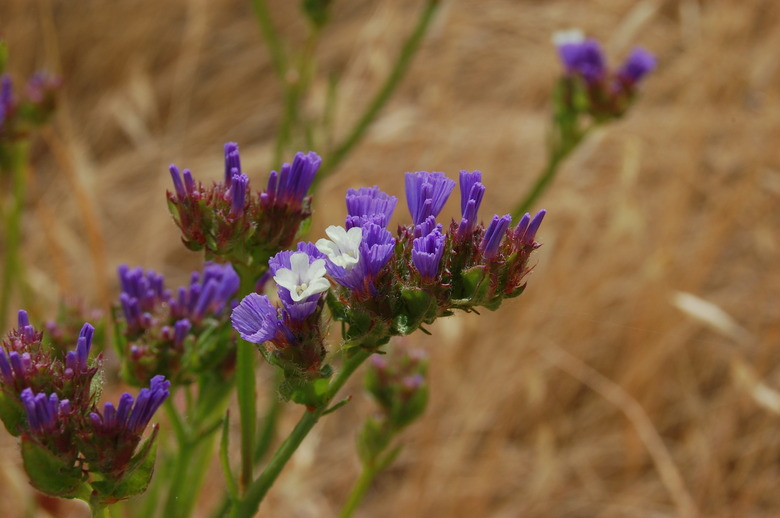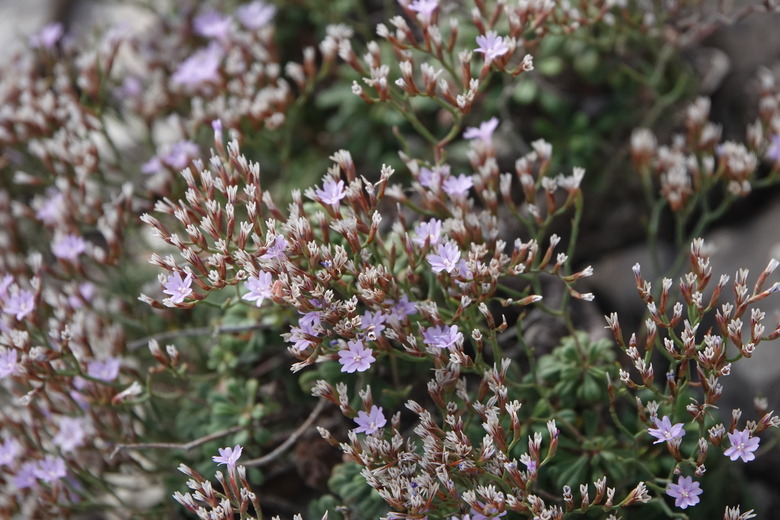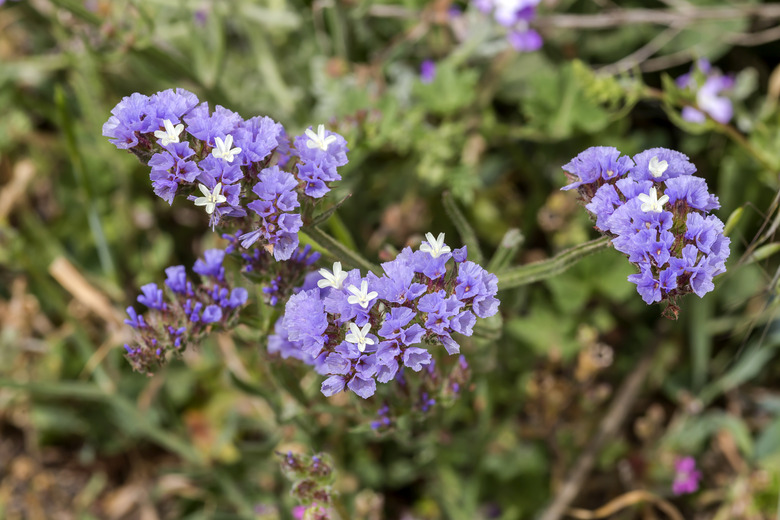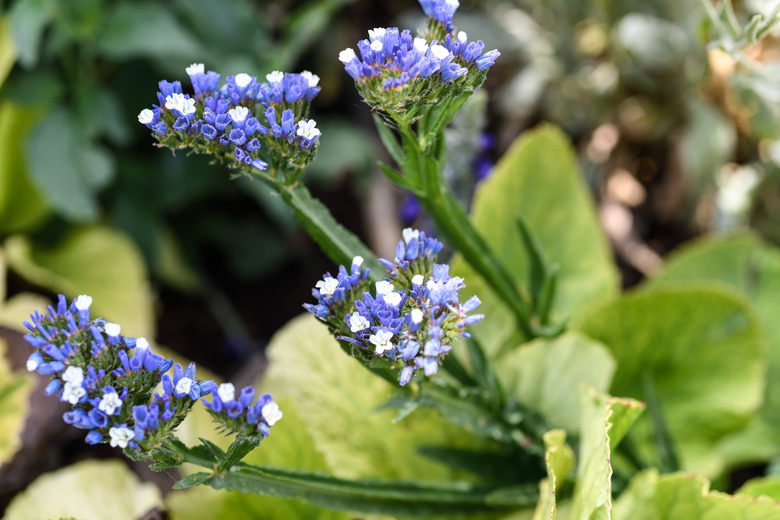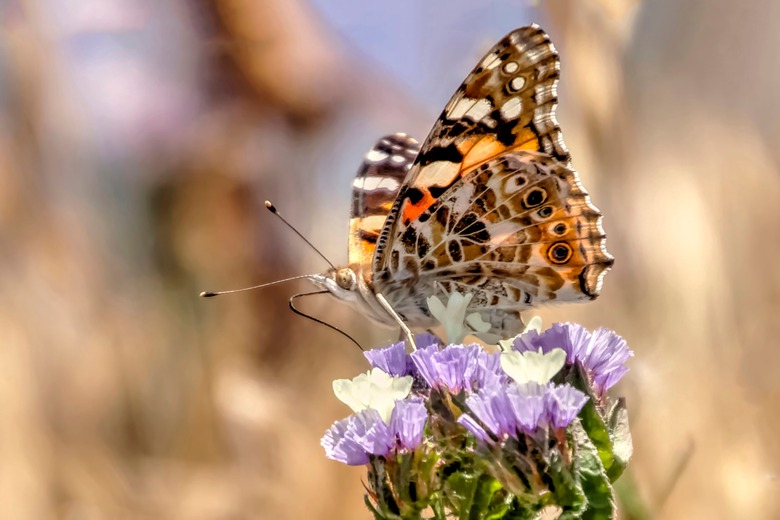How To Grow Statice
Common Statice vs. Dwarf Statice
Two species share the common name statice. Common statice (Limonium sinuatum) and its shorter sibling the dwarf statice (Limonium minutum) are both grown for their delicate flower clusters and attractive seed pods, which both make an excellent addition to flower arrangements.
These two plants share much in common when it comes to their growing requirements and care needs, but common statice grows best in USDA zones 8 to 10 while dwarf statice is more cold tolerant and will grow in USDA zones 5 to 9.
Tip
Both varieties of statice flowers make a versatile addition to cut-flower gardens, because the fresh flowers, the dried flower heads and the papery seed rosettes make an eye-catching addition to bouquets.
About Statice Plants
Common statice and dwarf statice both produce stalks of showy flowers that resemble lavender or heliotrope (Heliotropium spp.). The papery, funnel-shaped flowers come in shades of lavender and violet-blue and are tightly packed atop the leafless flower stalks.
Statice has foliage with a silvery or bluish-green color that resembles the foliage found on lavender (Lavandula spp., zones 5 to 10) but it is not fragrant.
The main difference between the two species is their height—common statice reaches a mature height of 12 to 18 inches with a 12-inch spread, while dwarf statice tops out at 10 inches, also with a 12-inch spread.
Starting Statice Seeds
Statice is a tender perennial but is often grown as an annual flower that must be started from seed each year. The seeds need no pretreatment to successfully sprout, but they must be started at least five to six weeks before the last frost so that they have time to mature a little bit before transplanting them into the landscape.
1. Fill seedling flats or peat pots with moist seed-starting compost. Leave the top 1/2-inch of the pot empty. 2. Sprinkle a few statice seeds onto the moist compost and gently press them onto the surface. Sprinkle a very thin layer of compost over the seeds without covering them too heavily. 3. Set the seedling flats or pots near a bright, sunny window or under grow lights. Cover them with plastic wrap. The seeds need temperatures around 70°F to germinate, so use a propagation mat to warm the seeds, if needed. 4. Mist the compost whenever it feels nearly dry on the surface. Keep the soil moist but do not let it get too soggy or the seeds could rot. The germination process is fast so watch for sprouts in just 5 to 14 days.
After the seeds sprout, remove the propagation mat and plastic wrap. Place the seedlings in a bright, sheltered spot where temperatures stay around 60°F for roughly one week. Bright, cool conditions encourage fast root formation, which will make stronger, healthier statice plants.
Tip
Acclimate statice seedlings to outdoor conditions for one week before transplanting them into the garden. According to Illinois University Extension, this entails placing them outside during the warmest part of the day for a couple of hours. Gradually increase their outside time over a two-week period until 10 to 12 hours, at which point, they are ready to transplant.
Growing Statice at Home
Statice will adapt to a wide range of challenging growing conditions, but they will bloom better if grown in the right spot. These fast growers originated in a Mediterranean climate, so they perform best under sunny conditions with good drainage.
- Choose a patch of ground in your garden with full sun or partial shade and well-draining soil. Sandy loam soil is preferable over heavy clay.
- Transplant statice into the garden after all danger of frost has passed and the soil has warmed. Till the bed and work in a 2-inch-thick layer of compost into the top 6 to 8 inches of soil, if the soil has a high clay content.
- Space common statice plants 9 to 12 inches apart and dwarf statice 6 to 10 inches apart. Make sure the base of the plant is at or slightly above the surrounding soil.
- Spread a 2-inch-thick layer of mulch between the plants to help keep the soil moist, but ensure that the mulch doesn't touch the base of the plants or it could cause the stems to rot.
Tip
Plant statice flowers in groups or bunches of three plants, which will give the planting a more naturalistic appearance.
Caring for Statice Flowers
Statice needs very little care once established in a suitable growing site. Both statice species are somewhat drought tolerant and they rarely develop serious problems unless grown under moist, hot conditions or if they are overwatered.
- Provide 1 inch of water each week during the spring and summer months, but water only if the soil feels dry on the surface. Statice grown in frost-free climates does not need water during the winter months.
- Statice does not need fertilizer. Rich soil can cause weak, leggy growth and fewer flowers to form. So do not amend the bed unless the soil is sandy or heavy with clay.
- Pruning is only needed to remove dead or damaged growth on statice plants. Statice doesn't need deadheading, because it only produces one bloom per year.
